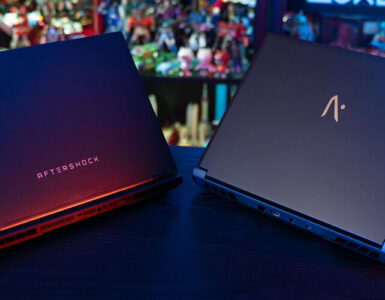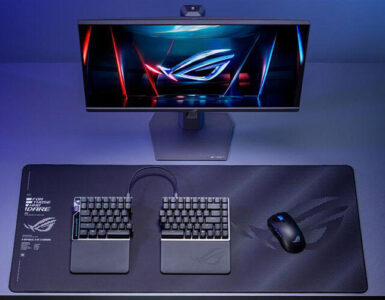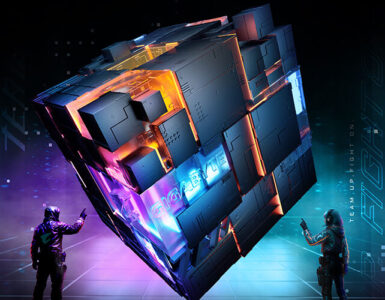In its current trajectory, the future of technology rests heavily on artificial intelligence, or AI, where the software opportunities are still being mapped out. And when it comes to the hardware powering the AI revolution, there’s no question that Intel, one of the world’s largest semiconductor chip manufacturers in the world, wants to play a key role.

Even as the world is anticipating the influx of new laptops, computers and mobile devices powered by Intel’s first generation of Core Ultra mobile processor, Meteor Lake, Intel has been teasing, hinting at and all but revealing its successor, Lunar Lake, which the company is looking at to supercharge the impending AI revolution when it comes to personal computing. With a projected release in Q3 2024, the Lunar Lake mobile processor is designed to be Intel’s most power-efficient x86 chip yet, boasting dedicated hardware for AI acceleration.
In the recent Intel Tech Tour Taiwan showcase, the American company took the opportunity to pull back the curtain on the magic that goes into the new Lunar Lake chips, and how it has been designed to dominate the AI tech landscape.
It didn’t have to go back to the drawing board, but Intel has revamped all of Lunar Lake’s computing components, encompassing speedier Central Processing Unit (CPU) and neural processing unit (NPU) cores and a new integrated Graphics processing unit (GPU) with the latest Xe2 architecture. The crucial focus here besides the CPU component is that the new Xe2 iGPU (integrated graphics) utilizes the same architecture and feature set that is employed in Intel’s upcoming Battlemage standalone discrete GPUs. This means that with the Battlemage tech implemented within the Lunar Lake’s mobile GPU, users can look forward to desktop-level performance on a laptop when it comes to gaming.
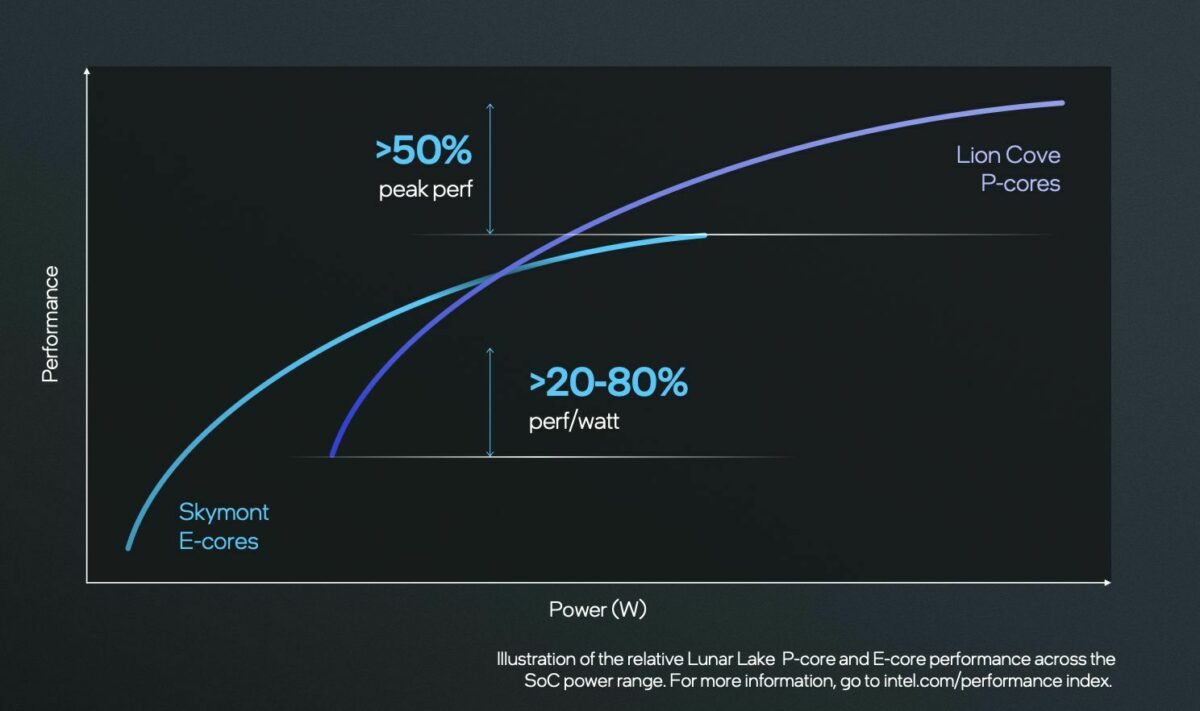
Compared to the previous generation Meteor Lake processor, the new Lunar Lake features new Lion Cove (P-Core) and Skymont (E-cores) microarchitectures, which are features that will carry on to the upcoming Arrow Lake desktop CPU as well. At the Tech Tour, Intel refrained from comparing its upcoming chip to its competitors, focusing instead on the improvements against its current Meteor Lake processors.

Compared to the previous Meteor Lake processor, Lunar Lake’s Skymont E-Core cluster is able to deliver more performance while drawing less power which is helpful when running most activities on the web.
While this looks good on paper, actual real-world performance would yield different results and tell another story, especially when global hardware partners including ASUS and MSI to put it all together. The final Lunar Lake SKU will feature four P-cores and four E-Cores (4+4) allowing the end user to enjoy an all-day laptop experience, without sacrificing their workflows in a slim physical laptop footprint.

When it comes to the NPU, which handles all the core AI processing workloads, Lunar Lake delivers up to 48 TOPs (trillions of operations per second) and is currently used as the benchmark to compare the NPU’s speed against the competition. Compared to Meteor Lake’s NPU of 11 TOPs, this represents a significant jump between generations. Across the combined CPU, NPU and GPU, Lunar Lake is looking to deliver up to 120 TOPs overall for AI-related workloads. The key number of significance would be the Lunar Lake’s NPU TOPs as Microsoft has laid down the benchmark of 40 NPU TOPs to run its Copilot Plus AI PCs. At the same time, this means that Microsoft has passed over Intel’s Meteor Lake CPU in just one generation jump.
Naturally, the current question then is, does this mean that anyone with an existing Meteor Lake laptop PC has a machine that is rendered obsolete, since new capabilities are just around the corner? According to Intel’s Michelle Johnston Holthaus, Executive Vice President & General Manager, Client Computing Group, it’s not quite the case.

During a roundtable discussion in Taiwan, Holthaus shared that the answer is actually more nuanced. “There’s a lot of things that people want to do with AI, the Meteor Lake can absolutely take advantage of. And I think we would argue that some of the software will improve in a few years.”
As it stands, Microsoft’s own Copilot Plus software ambitions have not been fully realized as many of its features already exist and are handled in part by cloud computing, just that the NPU helps perform these processes locally and without an Internet connection.
It’s a one-sized fits all situation which Holthaus says caters to most users, as hardware makers have to balance the need for local performance, and the efficiency, and connectivity, of cloud computing.
“We’ve always talked about the fact that there are some processes that are more efficient if you run them on your PC and then there are times when it might be more efficient on the cloud. So either anybody who bought a Meteor Lake PC is really future-proofing, making sure they have AI capabilities.”
With all things AI, we would say it’s easy to get caught up in the hype of it all which is something that Holathus explained as a matter-of-fact without dropping a beat.
“Most of us haven’t seen a Copilot PC or Copilot Plus PCs. And so I think we really need to understand what it is that users want to take advantage of in the operating system and which things it’s going to enable. We’ve been working with Microsoft to ensure we saw the specifications for Copilot Plus but I think it’s a little overstated to say that everybody needs a Copilot Plus PC.”
With the first Copilot Plus PCs only coming out as early as 18 June 2024, it rests on the users to figure out if the new features are essential to the first wave of users.
Therefore, investing in a current-generation AI PC like those with Meteor Lake isn’t a wasted endeavor. It’s a form of future-proofing, ensuring access to a baseline of AI capabilities (such as generative images, audio-to-text transcription, text-to-music generation) will likely expand and evolve in the coming years. The key is to view AI as an ongoing journey rather than a fixed destination.
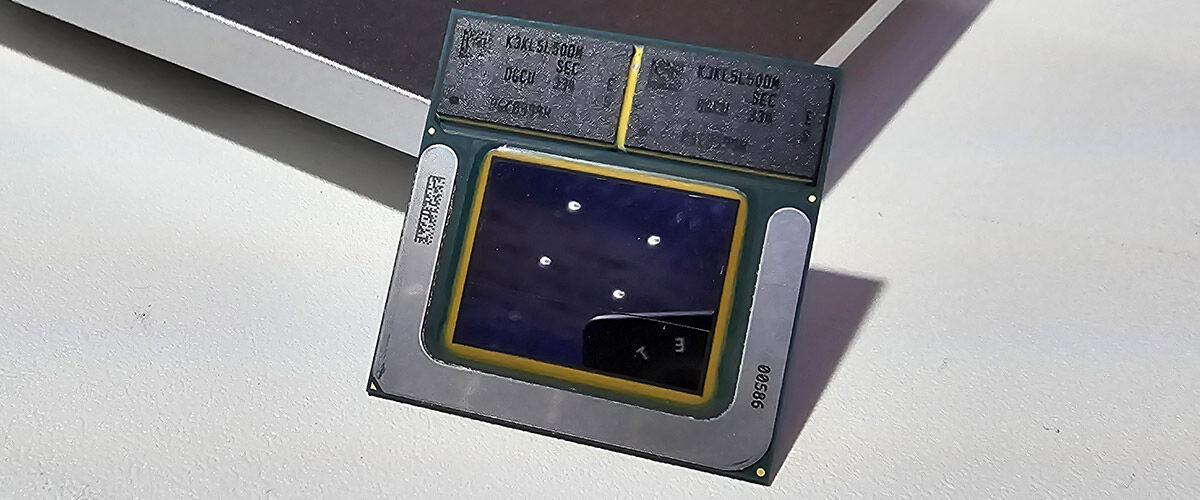
Of course, Lunar Lake’s enhanced AI capabilities, especially in conjunction with Copilot Plus, will undoubtedly open new doors for AI-powered productivity and experiences. The dedicated AI hardware, improved efficiency, and seamless software integration promise to deliver a significant boost in AI performance.
However, it’s important to remember that not every user requires the absolute cutting edge of AI technology. The ideal AI PC depends on individual needs and usage patterns. For many, the capabilities of current-generation AI PCs will suffice, and they can still reap the benefits of AI-driven advancements.
As with all things tech, we’ll be looking forward to getting hold of the new Lunar Lake CPUs and see if the tech leap is harnessed well by the OEM partners and if it lives up to the hype for anyone looking for a laptop upgrade.
Gerald currently straddles between his love of video games and board gaming. There’s nothing that interests him more than trying out the newest and fanciest gadget in town as well. He dreams of publishing a board game sometime in the future!


